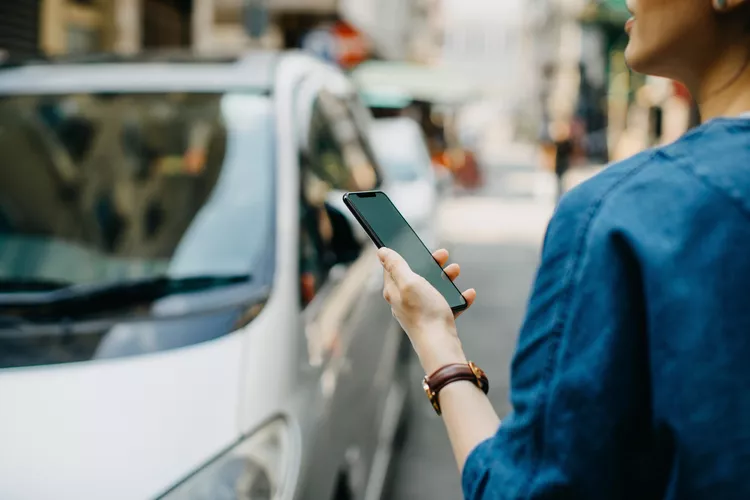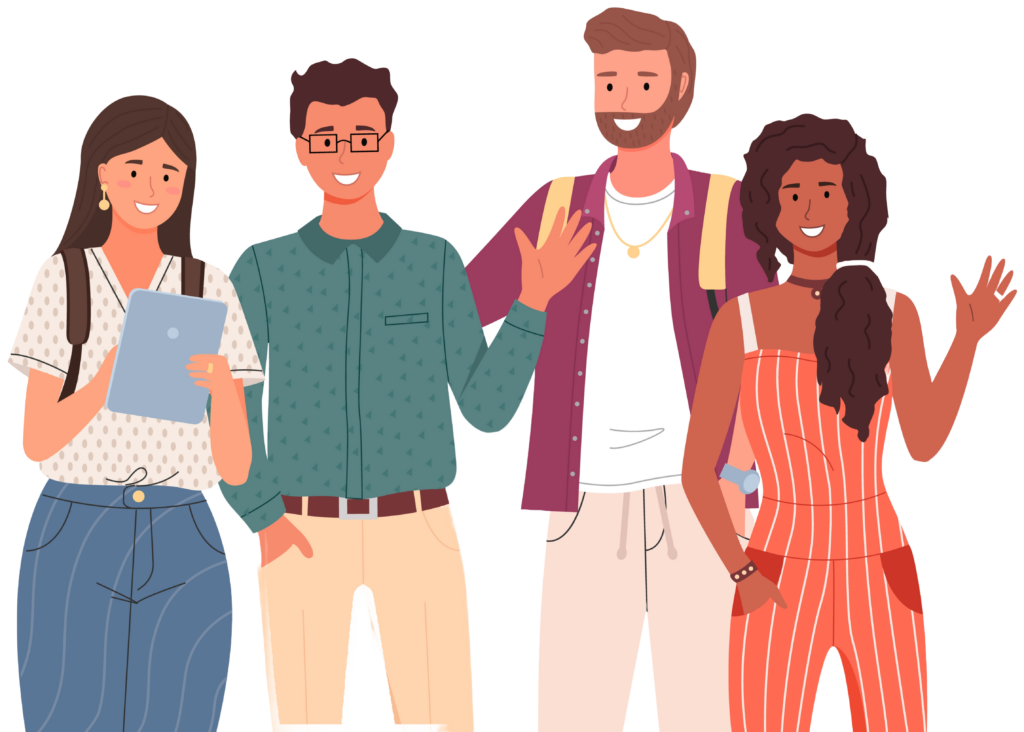Drunk driving alternatives are essential for safety, as a DUI-related fatality occurs every 52 minutes in the U.S.
This stark figure shows the importance of using alternative transportation methods, such as rideshares and taxis, to prevent the tragedies that can and will come from driving under the influence of alcohol or drugs.
Understanding the Dangers of Driving Under the Influence
Driving while under the influence of alcohol is a dangerous gamble not only for oneself but also for others.
The physical and cognitive effects of alcohol can significantly impair a driver’s ability to operate a vehicle safely.
Physiologically, alcohol can reduce brain function, impairing critical abilities such as thinking, reasoning, and muscle coordination, which are crucial for driving safely.1
Even a small amount of alcohol in the bloodstream, measured as blood alcohol concentration (BAC), can increase the chances of a crash.
Alcohol can affect visual functions, reduce reaction times, and hinder judgment.
On the cognitive front, alcohol can cause drivers to have a false sense of confidence, reduce their ability to make rational decisions and skew their perception of their abilities.
These effects can lead drivers to take risks they would not usually take when sober, such as speeding or neglecting to use turn signals.
Personal tolerance levels to alcohol vary widely among individuals due to several factors, such as weight, gender, metabolism, and the amount of food consumed.
The unpredictability of alcohol’s effect means that the same amount of alcohol can have vastly different impacts on different people or even the same person under different circumstances.
This variability makes it nearly impossible to judge one’s driving fitness after drinking.
Habitual drinkers may not feel the effects of alcohol as noticeably as occasional drinkers, but their motor skills and driving performance are still impaired, known as ‘functional tolerance.’2
The unpredictability of personal tolerance, coupled with the impaired physical and cognitive faculties, makes driving after drinking an act of sheer irresponsibility.
Drunk Driving Alternatives
Exploring alternatives to drunk driving is not just a choice—it’s a responsibility.
With the growing accessibility of various transportation options, making the right decision has never been easier.
There are a range of reliable and safe substitutes for getting behind the wheel after consuming alcohol.
From the convenience of rideshare apps to the traditional hail of a taxi, we’ll cover the best practices to ensure that your night out ends as safely as it began.
Considering these smart alternatives to driving while intoxicated.
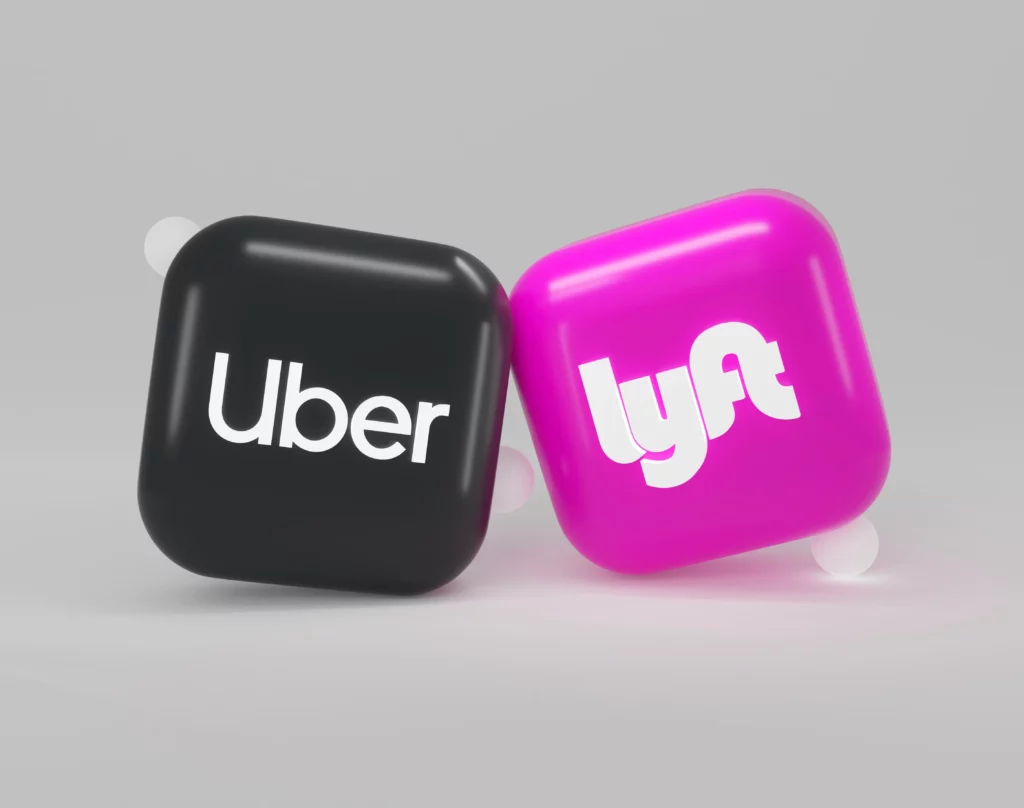
Ridesharing Services
Popular Platforms:
In modern transportation, ridesharing services have become a staple of urban mobility.
Uber and Lyft are the major players in the US ride-sharing market, offering a quick and efficient way for users to book a ride using their app.
These services have become an integral part of city life, and there’s no better time to use them to get home than after a drinking so that you can stay safe.
In addition to these well-known companies, many regional players provide similar services tailored to meet local needs and regulations.
| Rideshare Option: | Details: |
|---|---|
| Uber | Use the Uber app to choose your ride and set your location. You’ll see your driver’s picture and vehicle details and can track their arrival on the map. Cost varies by time of day, city, and ride type. UberX is the most economical option, while UberBLACK is more premium. |
| Lyft | Lyft operates similarly to Uber. Request a ride from the app and follow along as your driver arrives. Lyft typically offers multiple services, from shared rides to luxury private cars, with costs comparable to Uber. |
Advantages:
Ridesharing platforms offer numerous benefits to users.
Their mobile applications have an intuitive design that makes booking rides seamless and effortless.
This ease of use attracts many customers who prefer the convenience of arranging transportation with just a few clicks on their smartphones.
Ridesharing services are available in most urban and suburban areas, providing a reliable form of transport.
This is especially valuable for people who may be impaired after drinking.
Safety is also a cornerstone of these apps.
Driver ratings offer transparency and accountability, while ride tracking provides an added layer of security.
Passengers and their contacts can monitor a trip in real time, ensuring a safe and secure ride.
| Tips for a Safe Rideshare Experience |
|---|
| 1. Verify the driver’s identity by matching the app’s profile with the person. Ensure the photo, name, and car details like make, model and license plate are correct. |
| 2. Wait for your ride in a safe, well-lit area, and do not disclose personal details to the driver other than your name. |
| 3. Share your trip details with someone you trust. Most ridesharing apps have a feature that allows you to share your driver’s route and arrival time. |
| 4. Sit in the backseat if you are riding alone. This gives you and your driver some personal space and ensures you can safely exit the car on either side. |
| 5. Always wear your seatbelt, even in a rideshare vehicle, for your safety in case of an accident. |
| 6. Follow your intuition; if you ever feel uncomfortable or in danger, trust your instincts and use your phone to call for help or emergency services. |
| 7. Rate your driver after your trip. This feedback helps improve the rideshare service and informs future passengers. |
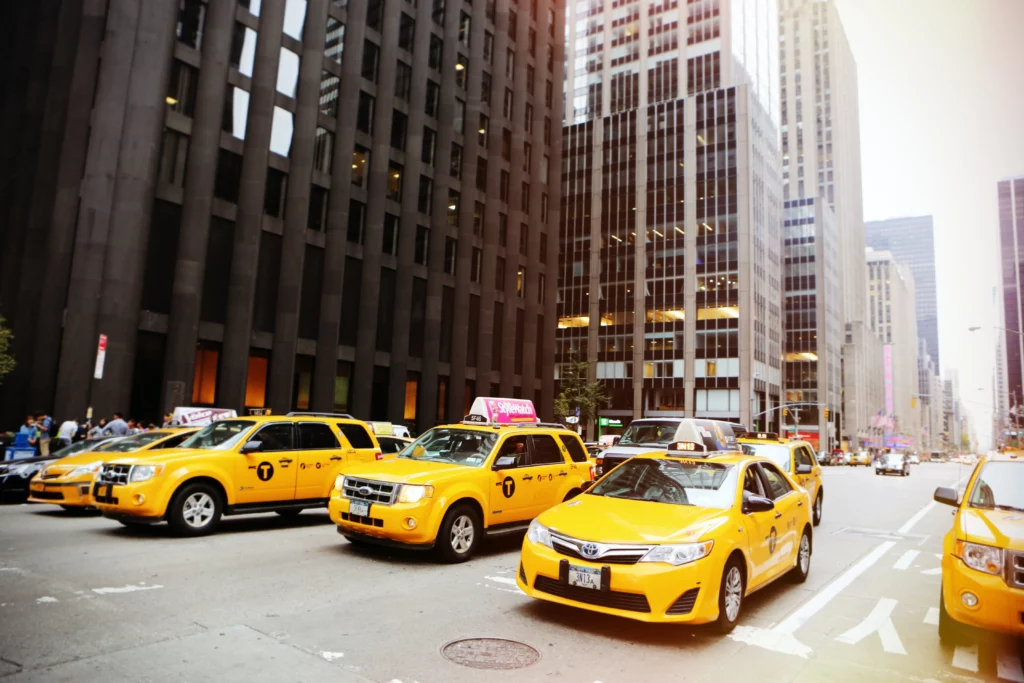
Traditional Taxis
Advantages:
Taxis have been an integral part of urban transportation networks for a long time and still offer significant benefits even in the age of digital ridesharing.
One of their primary advantages is their wide availability, especially in cities where they are a familiar sight and can often be hailed on the street with a simple hand gesture.
Moreover, taxi drivers usually possess an intimate knowledge of their local area.
They navigate city streets daily and are well aware of the quickest routes to a destination, which can be especially helpful in times of heavy traffic or when detours are necessary.
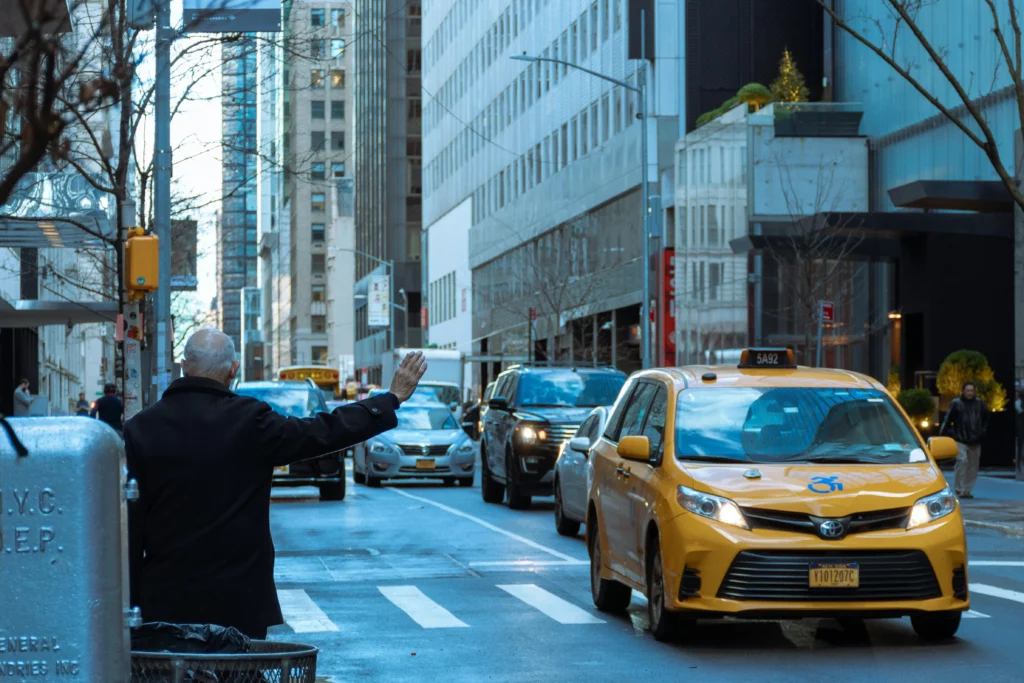
How to Hail and Use a Taxi:
Knowing how to hail a taxi can vary depending on where you are.
In urban areas, you can usually hail a taxi from the street or by waiting at a taxi stand.
In suburban areas, where taxis are less common, it’s best to book a ride in advance by calling a taxi company or using a mobile app.
The cost of a taxi ride typically includes a base fare along with additional charges based on distance and time.
Many taxi services offer online fare calculators or apps, so riders can get an estimate before beginning their journey.
While tipping is customary in many places, it is wise to check local customs regarding tipping practices.
When using traditional taxis, it is critical to confirm that the vehicle is licensed.
This can be done by checking for a meter, taxi license plate, or other identification that confirms it’s an official city cab.
Additionally, it’s a good idea to ask about payment methods, as some taxis may not accept credit cards.
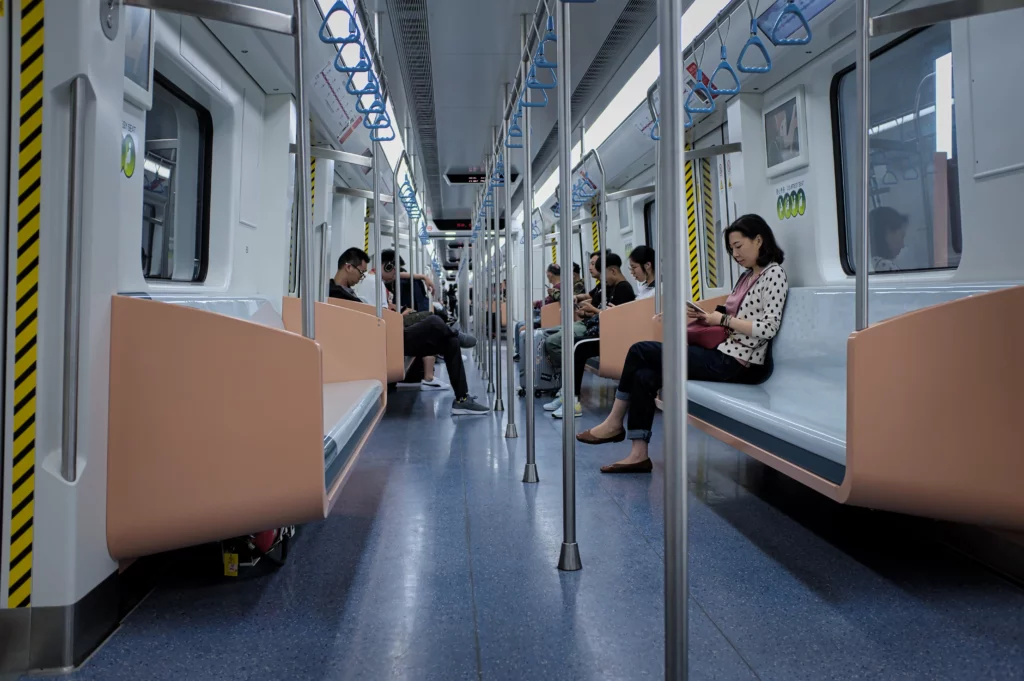
Public Transportation
Types of Public Transit:
Public transportation systems play a crucial role in urban infrastructure as they offer a network of travel options that are essential for both daily commuters and visitors.
The network usually includes buses and trains supplemented by subways and trams in many cities.
Buses offer extensive coverage and flexibility, connecting numerous neighborhoods and even different cities.
Trains, whether inter-city or local commuter trains, provide more rapid transit over longer distances with greater speed and comfort.
Subways, primarily found in larger metropolitan areas, facilitate efficient movement within a city by avoiding street-level traffic.
Trams, also known as streetcars, offer a mix of both options, often providing a scenic route through city streets while still being separated from traffic.
Here’s a comprehensive list of available public transportation options, including pricing information and more:
| Type of Public Transit: | Details: |
|---|---|
| Buses | Widely available. Pricing varies by city, typically $1-$3 per ride. Access with cash, cards, or digital apps. Frequency depends on the route and time of day. |
| Trains | Includes inter-city and commuter lines. Priced by distance, often between $2-$20+. Accessed via stations, with tickets from machines or counters. |
| Subways | Primarily in larger cities. Similar pricing to buses, often with the option for passes. Access through underground stations with turnstiles. |
| Trams/Streetcars | Available in some cities, offering scenic routes. Priced similarly to buses. Stops are frequent and usually not enclosed like subway stations. |
| Ferries | Available in areas with significant waterways. Prices range widely based on distance and service type. Access via piers or terminals. |
| Bike Share Programs | Available in many urban centers. Users pay per ride or via subscription. Bikes are accessed at docking stations throughout the city. |
| Light Rail | Found in several cities, bridging the gap between tram and train. Pricing is often in line with bus fares. Accessed via platforms at street level or elevated. |
Benefits:
The use of public transportation comes with several benefits.
From a personal finance perspective, it is often significantly more cost-effective than owning and maintaining a private vehicle, not to mention the savings on parking fees and fuel.
Environmentally, it reduces the number of vehicles on the road, thus lowering traffic congestion and the associated emissions.
Many public transit systems in urban areas also have the advantage of running late into the night, offering a reliable means of transportation for late-hour workers or those enjoying the city’s nightlife.
| Tips for Navigating Public Transit |
|---|
| 1. Use transit apps to check schedules, plan routes, and monitor real-time updates for buses and trains. |
| 2. Always have a backup plan in case of unexpected changes in service or delays. |
| 3. Keep your transit card or tickets easily accessible but secure to streamline your boarding process. |
| 4. Mind the transit etiquette: offer your seat to the elderly, disabled, pregnant women, and those with small children. |
| 5. Stay aware of your surroundings and keep an eye on your personal belongings at all times. |
| 6. If traveling in an unfamiliar area, study the transit system map beforehand or carry a copy. |
| 7. Be prepared for payment before your stop arrives to avoid rushing, especially when exiting the vehicle. |
Designated Drivers
The Concept Explained:
The concept of a designated driver is a simple yet highly effective strategy for ensuring the safety of individuals who wish to consume alcohol away from home.
The designated driver is the person who volunteers or is chosen to abstain from drinking alcohol for the event or outing, thereby being responsible for driving others in the group to and from the destination safely.
This approach prioritizes safety by ensuring that impairment does not come into play when operating a vehicle.
Benefits:
One of the most appealing benefits of having a designated driver is that it incurs no additional costs compared to other alternatives like taxis or rideshares.
It can be especially economical for regular social gatherings.
There’s also a comfort and trust factor involved with having a familiar face—a friend or family member—behind the wheel.
This can alleviate the anxiety that sometimes accompanies riding with an unknown driver and ensures that everyone in the group has a reliable way to get home.
How to Rotate and Choose a Designated Driver:
Establishing a fair rotation system among a friend group is a common practice to ensure that the responsibility of being the designated driver is shared over time.
This can be organized informally through conversation or more formally with a schedule, especially if social gatherings are regular events.
The designated driver for the evening must be truly sober, as even small amounts of alcohol can impair judgment and reaction times.
The group should agree that the designated driver refrains from all alcoholic beverages, not just limiting the amount.
Choosing a designated driver may also depend on driving experience, comfort with night driving, and familiarity with the area.
This person must be not only sober but also a competent and responsible driver.
Moreover, the entire group should support the designated driver, respecting their role and not encouraging them to drink.
This collective responsibility ensures the safety and well-being of everyone involved.
Local Community Programs
Safe Rides Programs:
Safe Rides programs are initiatives often run by volunteer-based or non-profit organizations that provide free or low-cost transportation to individuals too impaired to drive.
They are typically local endeavors tailored to meet the needs of their specific communities and may be especially active during holidays or weekends when alcohol consumption is more common.
Some programs even operate specifically within university or college settings to serve students.
These services aim to reduce the number of intoxicated drivers on the road by offering a safer alternative.
Tow-to-Go Services:
Tow-to-Go or similar services take the concept of not drinking and driving a step further.
Not only do they provide a safe ride for the individual, but they also tow the person’s vehicle to their home.
This is particularly beneficial because it removes the temptation to drive later in the night should the individual believe they have sobered up enough to operate their vehicle.
It also eliminates the need for retrieving the car the next day, which could be both inconvenient and potentially costly if it were left in a no-parking zone or a paid parking lot overnight.
How to Find and Utilize These Programs:
Locating and making use of these community programs requires a bit of planning.
Researching and noting down the available options before heading out can save time and ensure you know what to do in case you need assistance.
Local community centers, municipal websites, or even a simple internet search can yield valuable information about these programs.
It’s advisable to save contact details on your phone or note them in your wallet.
Utilizing these services not only helps keep you and others safe but it also supports community initiatives that rely on the goodwill of volunteers and the support of the local population.
By choosing to use a Safe Rides service or a Tow-to-Go program, individuals are contributing to a community culture that values safety and responsible behavior.
These programs often provide a valuable service to those who may not have the financial means to pay for a taxi or a rideshare, furthering their community benefit.
Stay Over Options
When planning an evening out that involves alcohol consumption, one of the most responsible decisions you can make is to arrange a place to stay afterward, eliminating the need to drive entirely.
Staying at a Friend’s Place:
The value of planning to stay at a friend’s home cannot be overstated.
It is often the most comfortable and cost-effective option.
By arranging to spend the night where the social event occurs or at a nearby friend’s home, you ensure you have a safe place to sleep it off.
This plan requires good communication and preparation; you should bring anything you might need overnight, such as a change of clothes or personal items.
It’s also an act of courtesy to help clean up the next day as a thank-you gesture to your host.
Booking Nearby Hotels or Motels:
For those times when staying at a friend’s isn’t an option, booking a nearby hotel or motel is a safe bet.
This might be more applicable in scenarios where the event is in an area unfamiliar to you or when it’s a more formal occasion, like a wedding at a hotel or banquet hall.
Many establishments offer discounts for events or have partnerships with local taxi services to transport guests safely.
It’s also worth checking apps and websites that offer last-minute deals on rooms.
With the increase in mobile technology and apps, finding and booking a hotel room on short notice has become more accessible.
It allows for greater spontaneity; if you’ve had one too many, you can book a room without planning far in advance.
However, the most responsible approach is to anticipate the possibility of impairment and book ahead of time, ensuring you don’t take risks trying to secure a room while under the influence.
Both options underscore the importance of prioritizing safety over convenience and acknowledge the potential hazards of impaired driving.
By making arrangements to stay over, individuals take proactive steps to protect themselves and others on the road and maintain the integrity of their social responsibilities.
Choosing the Right Alternative to Impaired Driving
The multitude of options available today makes it clearer than ever that safety should always take precedence over convenience.
There is simply no excuse for driving under the influence when you can choose from rideshares, public transportation, taxis, designated drivers, local community programs, or planning a safe stayover.
Each alternative offers its blend of benefits, ensuring that, no matter your situation, there is a solution that can keep you and others out of harm’s way.
As we continue to enjoy the pleasures of social gatherings and celebrations, let us commit to making responsible choices that safeguard our communities and loved ones.
Remember, a night out should be remembered for good times, not marred by preventable tragedies.
So, let’s pledge always to plan and choose one of the many safe alternatives to driving after drinking!
If you or someone you know is struggling with alcohol addiction, it’s important to seek help.
Should you find yourself navigating the aftermath of a DUI, including legal repercussions, Cornerstone DUI Programs provide DMV and MVD-approved online classes and screenings.
Check out our Arizona DUI Services, all accessible remotely so that you can address your DUI obligations at your convenience from any location.
We also provide care for alcoholism at our drug and alcohol rehab facility in Arizona.
Contact Cornerstone DUI for guidance toward a healthier, safer path forward.
